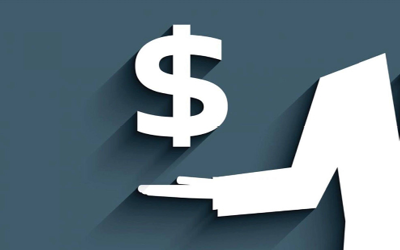This article appeared in the Australian Financial Review.
The search for decent fixed income investments has been intensifying since the COVID crisis ushered in the lowest government bond yields in history. Not only are rates very low, but the March selloff reminded us that any investment that is traded on a market, even fixed income, can see its price drop like a stone when panic-stricken buyers disappear.
‘Private debt’, where you invest in a secured loan between a borrower and a non-bank lender which in turn syndicates the loan to outside investors, has become increasingly popular over the past few years as yields have steadily declined. Market researcher, SQM, reported growth in the mortgage loan sector of nearly 200% in 2019.
The main reason for the surge in popularity is investors are able to earn yields that can vary between 5-11% per annum on loans with a typical term of 6-24 months. Another benefit is the loans have no direct correlation to shares because they are not traded on a market, which means their value doesn’t fluctuate.
The critical thing for any investor is to remember these investments are not risk-free, so you need to make sure you’re comfortable with the risks involved and do your homework on the provider of the loan. If a loan goes bad, you could lose all your money. However, if you choose wisely, private debt can be the hidden gem of your portfolio.
Giles Borten, CEO of boutique lender Bass Capital, says this asset class has flourished because small commercial lenders seized on the major banks all but walking away from middle market loans ranging from $3-20 million. This came about after APRA, the banking regulator, amended its prudential guidance to the big banks in an effort to make sure the Australian banking system is amongst the strongest in the world.
One of the consequences of those changes is that it became unprofitable for the banks to dedicate much of their precious capital to lending to small property developers, which has become the bread and butter of the private loan market.
Wary investors might ask why would borrowers pay such high interest rates – up to 11% – at a time when you can take out a mortgage to buy a house for less than 3%? One reason is because the risks are very different in lending on a property development project compared to buying a residential property to live in, there are the construction risks and then the finished product has to be sold. Another is precisely because the banks are not competing in the space and the borrowers need to get financing from somewhere. As Adam Smyth, a co-founder of Bowery Capital in Melbourne, said, “It’s a lender’s market at the moment, quality deals are plentiful and there’s no need to compromise on lending standards or price.”
Another concern for some investors might be the possibility of a fall in property prices. The first thing to remember with these deals is that you’re effectively in the shoes of the bank, so you have no exposure to the equity side of the property transaction. The borrower might double their money, but the most you can make is the agreed interest on the loan.
Likewise, the borrower might make no profit at all or even lose money. In that case, the security you have on the loan becomes critical. There are two elements to every loan’s security. Firstly, the vast majority of loans are secured by a first mortgage over the property together with any improvements, and many will also include a personal guarantee from the developer.
Secondly, the loan to valuation ratio (LVR) determines your margin of safety. If a finished development is valued at $2 million and the loan is for $1 million, then the LVR is 50%. It means if the borrower defaults and the lender is forced to sell the property, it can be sold for half its estimated market value and the lenders will still get their money back. It shows how important it is the valuation is carried out by a reputable, independent expert.
How do you access the private loans market? There are again two parts to this answer. First, if you qualify as a wholesale investor (gross income of more than $250,000 for the last two years or more than $2.5 million of net assets) there are many more opportunities available to you, through boutiques like Bass Capital and Bowery Capital, whose returns have averaged 9% per annum with 12 month terms, or the range of larger lenders like Wingate or Qualitas. For retail investors the alternatives are more limited, but it’s still accessible through groups like Australian Unity or even LICs on the ASX (like QRI, but beware, being a traded security, its price fluctuates along with the market).
Second, you can invest in a pooled mortgage fund, where the manager selects the investments, or a ‘contributory fund’, where you choose which deals to go into. As with all portfolio decisions, diversification is an important way to mitigate risk.
In an environment where yield is harder to find and volatile markets can wreak havoc with asset values, private loans can be an attractive option, but you must make sure you’re aware of the risks involved with each and every transaction and, as always, it pays to deal only with reputable providers. If you’re still not sure, then speak to an adviser, but make certain it’s one that’s familiar with the asset class.





